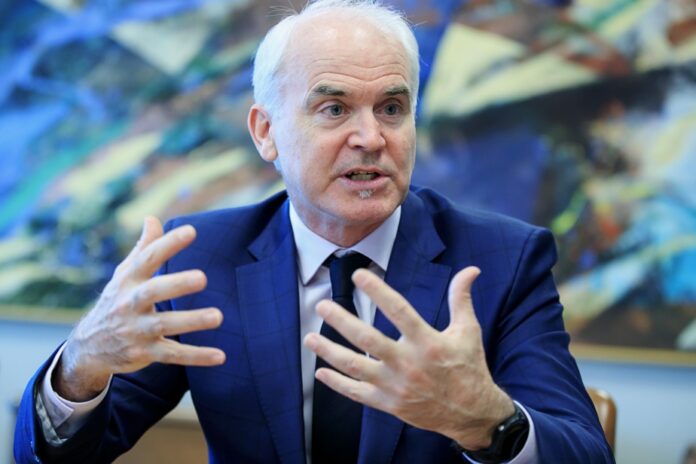(Victoria) Recent economic data suggests the risk of lingering inflation has increased, prompting the central bank to decide on Wednesday to raise interest rates, a Bank of Canada deputy governor said Thursday.
In the text of a speech delivered Thursday before the Chamber of Commerce of Greater Victoria, Paul Beaudry returned to the decision of the central bank to end its pause on interest rate hikes. The bank’s key rate is now at 4.75%, its highest level since 2001.
Beaudry said economic data released since April had “tipped the balance in favor of a hike” for the central bank.
“We now have an accumulation of data – across a range of economic indicators – that suggests excess demand at home is more persistent than we thought, increasing the risk that the decline in inflation will stall,” Mr. Beaudry said.
“That’s why we decided to raise the policy rate. »
After raising interest rates eight times in a row, the Bank of Canada announced in January that it was suspending its rate hike cycle. She seemed cautiously optimistic that this would be enough to stifle inflation, but central bank governor Tiff Macklem had stressed that the central bank would be ready to raise rates further, if necessary.
Since then, the Canadian economy has continued to surprise forecasters expecting a slowdown.
In his speech, the deputy governor explained that stronger growth, a tight labor market and a rise in annual inflation in April suggested that interest rates were not high enough.
Last week, Statistics Canada reported that the country’s real gross domestic product grew at an annualized rate of 3.1% in the first quarter.
Beaudry said the rapid rise in consumer spending has taken the central bank by surprise as buyers appear to be returning to the housing market.
Progress on the inflation front also declined slightly in April, with the annual rate reaching 4.4%.
Meanwhile, the labor market has remained remarkably resilient, with an unemployment rate of 5.0%.
“In light of recent dynamics in core inflation and continued excess demand, we agreed that there is now a greater risk that headline inflation will remain stuck well above the 2% target. said Mr. Beaudry.

